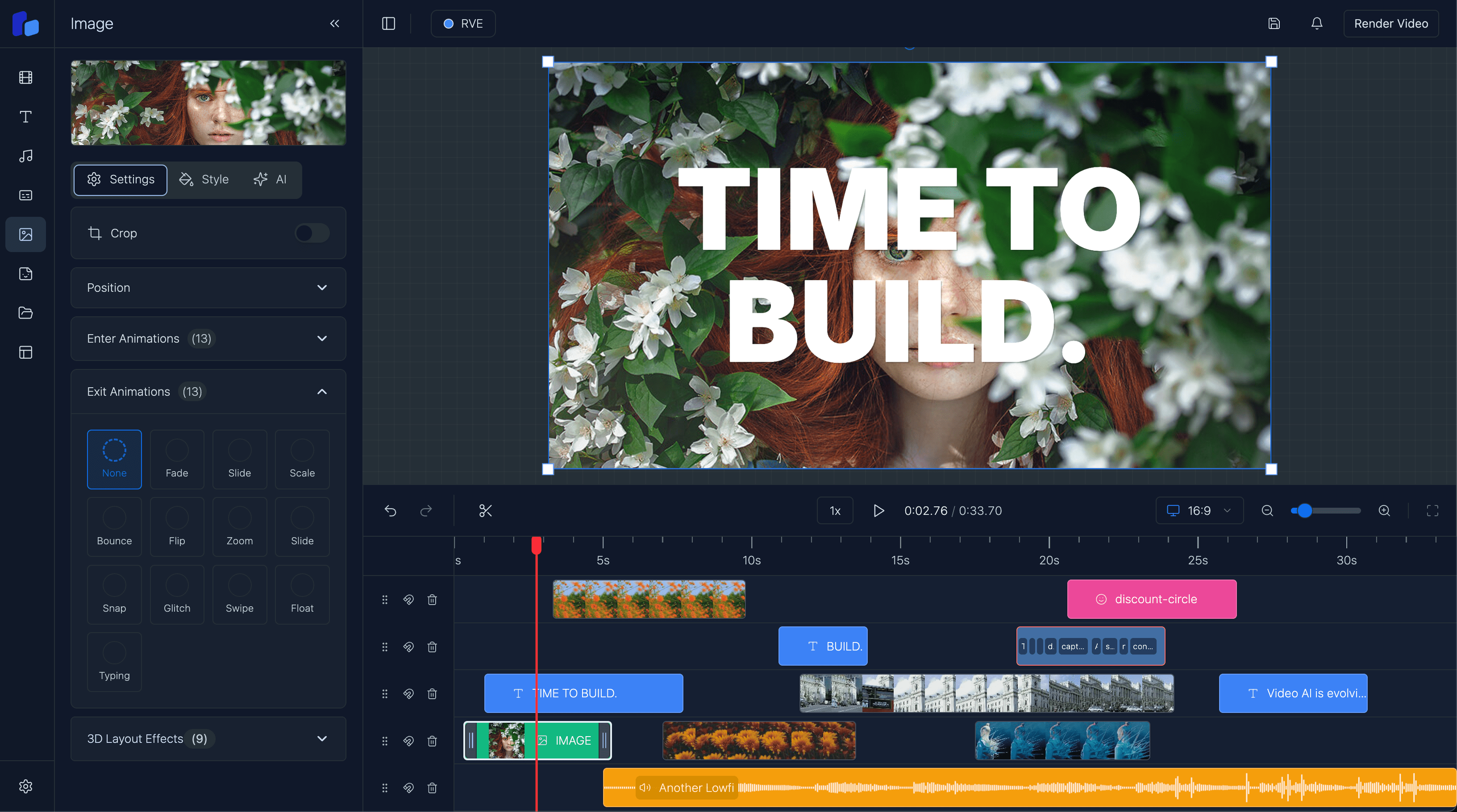How Templates work in React Video Editor
Learn how templates work in React Video Editor and how they build on the overlay system to create reusable, structured video layouts.
Sam
Creator or RVE
React Video Editor (RVE) gives you a powerful way to build dynamic, structured videos directly in the browser. At the heart of it are Overlays, the building blocks that define every element in a video, from text and images to video clips, captions, and audio.
If you haven’t already, it’s worth starting with this: Understanding Overlays in React Video Editor. It covers the basics of how overlays work and how they’re used to compose scenes.
Once you understand overlays, the next natural step is grouping them into reusable video structures. That’s where Templates come in.
What Are Templates in RVE?
Templates are simply collections of overlays bundled together with some global video settings like duration and aspect ratio. Think of them like blueprints. Instead of building from scratch every time, you can load a layout, adjust a few pieces, and hit render.
Templates let you:
- Save time by skipping repetitive setups
- Keep your videos consistent across a series or brand
- Give users a structured starting point for customization
Under the hood, a template is just a JSON file that defines the layout and content of a video.

An Example:
example-1.json
Let’s look at a real template that ships with RVE, called example-1.json or "Relax Tiktok." This one includes a few background videos and a simple text overlay.
{
"id": "example-1",
"name": "Relax Tiktok",
"description": "A relaxing video.",
"duration": 330,
"aspectRatio": "9:16",
"overlays": [
{
"id": 0,
"type": "video",
"from": 0,
"durationInFrames": 83,
"src": "https://videos.pexels.com/video-files/31515004/13434969_360_640_60fps.mp4",
"styles": {
"objectFit": "cover",
"padding": "65px",
"paddingBackgroundColor": "#47a8d9"
}
},
{
"id": 1,
"type": "video",
"from": 69,
"durationInFrames": 84,
"src": "https://videos.pexels.com/video-files/31525167/13437855_360_640_30fps.mp4",
"styles": {
"objectFit": "cover",
"padding": "65px",
"paddingBackgroundColor": "#d67d76"
}
},
{
"id": 4,
"type": "text",
"from": 0,
"durationInFrames": 326,
"content": "Time to RELAX",
"styles": {
"fontSize": "3rem",
"fontWeight": "900",
"color": "#FFFFFF",
"textAlign": "center",
"textShadow": "2px 2px 0px rgba(0, 0, 0, 0.2)"
}
}
]
}You can read this like a set of instructions:
- Play two video clips back to back
- Show a title across most of the timeline
- Use padding and background colors for style
Everything here is made up of overlays, grouped into one file and tied together by global settings like duration and aspect ratio.
Using Templates in the Editor
Inside RVE, templates are managed by the TemplateOverlayPanel component. This is where users can:
- Browse available templates
- Import new ones from local files
- Apply a selected template to the current project
When you apply a template, the editor clears the current timeline and replaces it with the overlays defined in the template file. The aspect ratio also updates to match.
Behind the scenes, it’s as simple as:
setOverlays(template.overlays);
setAspectRatio(template.aspectRatio);It’s a reset button, but with a head start.
Why Templates Are Useful
Templates are a fast way to bring structure into your workflow. You can define full scenes with background videos, text, logos, music, and more, all ready to go. If you're building content at scale or working across teams, templates make collaboration and consistency much easier.
They also work well for automation. You could generate templates with code, pull them from a CMS, or use them to power user-generated content features. Since templates are just structured data, they fit naturally into any system already working with overlays.
Final Thoughts
Templates take the core concept of overlays and give them structure. They let you reuse layouts, share designs, and start new videos without rebuilding everything from scratch.
Over the coming months, templates and animations will be a big focus for RVE. The goal is to make it easier to create reusable, dynamic content with smooth transitions, effects, and motion out of the box-without needing to wire everything together manually. Whether you're building custom templates for clients or shipping your own editing features, there’ll be more tools coming to help streamline that process.




